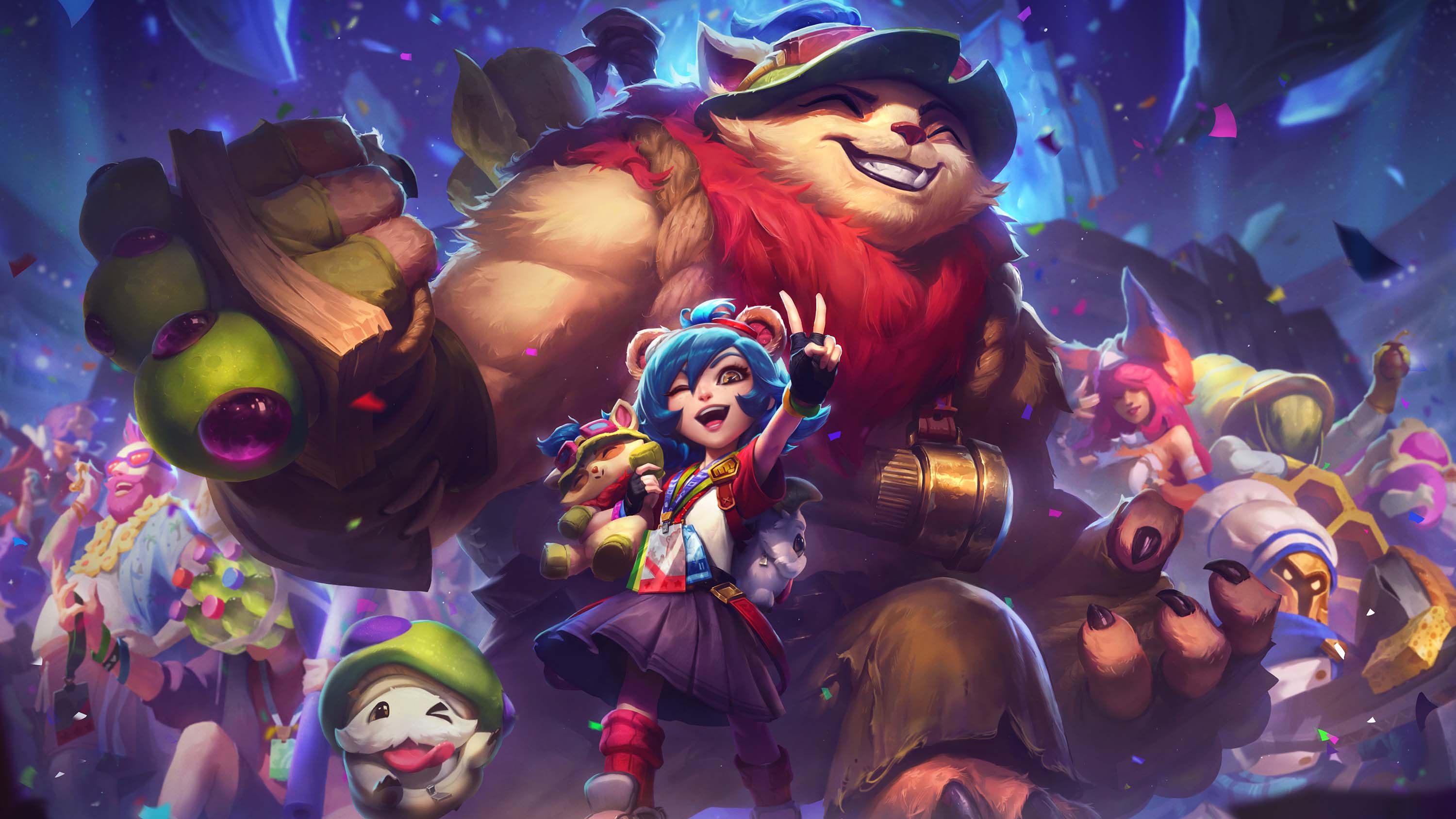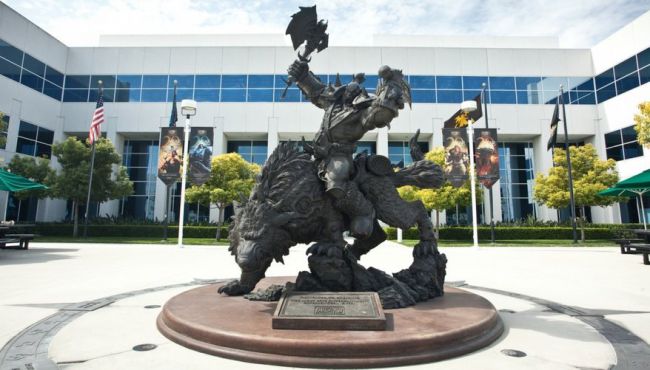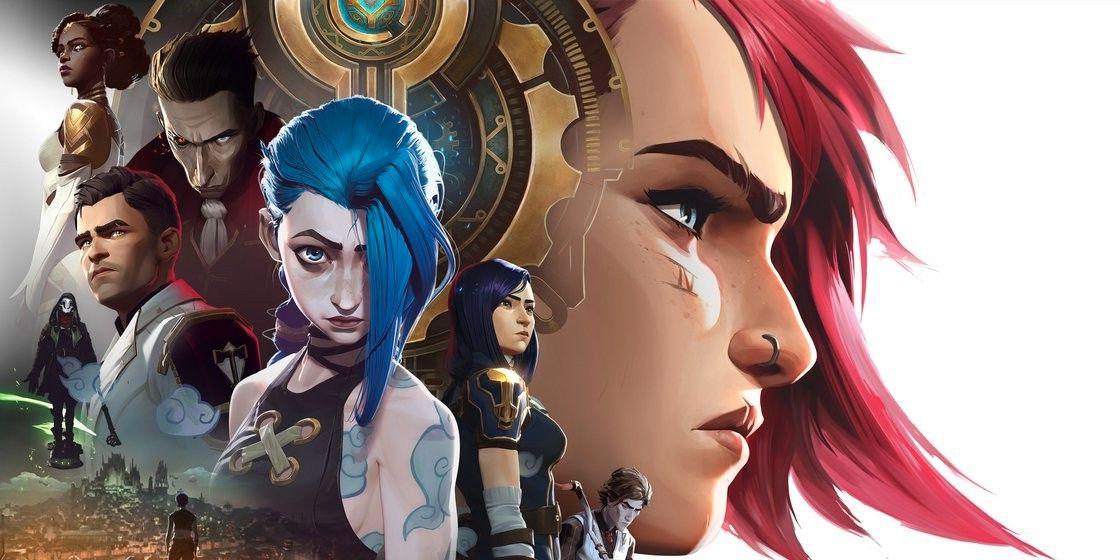The worst week for Blizzard has been the best week for Riot
While Riot celebrates the breakout success of Arcane, Blizzard's future looks increasingly uncertain.

It's been a hell of a month for Riot Games and a month of hell for Blizzard Entertainment. In less than three weeks, we've seen Riot:
- Release Arcane, a Netflix TV series that isn't just good for a videogame adaptation: it's genuinely amazing, and has had the critical reception to match.
- Follow that up by surprise dropping two League of Legends spin-offs, action-RPG Ruined King and cute mobile runner Hextech Mayhem.
- Show off two more new games coming next year.
- Bring all of its games to the Epic Games Store and celebrate Arcane with crossovers in Among Us, Fortnite, and Magic: The Gathering.
Blizzard's last few weeks have been the opposite.
- Blizzard delayed its biggest games, Overwatch 2 and Diablo 4, to 2023 at the earliest.
- Blizzard announced on the same day that studio co-lead Jen Oneal was leaving just three months into the job.
- Part of Oneal's resignation email made public in the latest round of damning allegations against Activision Blizzard, where she bluntly stated "the company would never prioritize [its] people the right way."
- Blizzard's flagship event BlizzCon effectively cancelled for 2022.
In this moment, the trajectories of two of gaming's biggest companies have never been in greater contrast: Riot is crushing it, while Blizzard, one of the pillars of PC gaming since the mid '90s, seems to be falling apart.
A brief history of two rivals
Blizzard and Riot are unusually intertwined. They are southern California neighbors, just an hour apart when LA traffic cooperates. Blizzard became famous for polishing games to a Nintendo-worthy shine. StarCraft created esports as we know them, and World of Warcraft became the definitive MMO, kicking off a decade of copycats.
Riot, established 15 years later, owes its existence to Warcraft 3 mod Defense of the Ancients. Riot's founders saw DotA as a perfect template for a constantly updated free-to-play game, and like WoW League of Legends was the breakout success that inspired dozens of wannabes.

As Riot grew, Blizzard had some of its strongest years, releasing StarCraft 2, popular WoW expansions, Diablo 3, Hearthstone, and then Overwatch, a smash success that proved Blizzard could apply the polish and accessibility it was known for to a first-person shooter. Meanwhile, it began to seem like Riot was never going to release a second game.
That finally changed in 2019, and it changed dramatically. In two-and-a-half years Riot has released Teamfight Tactics, Legends of Runeterra, and Valorant, each laser targeted at a popular corner of PC gaming:
Keep up to date with the most important stories and the best deals, as picked by the PC Gamer team.
- Teamfight Tactics has already outlived the flash-in-the-pan success of DOTA Autochess
- Valorant tinkers with Counter-Strike's FPS purity
- Legends of Runeterra expands LoL's lore while tapping into the popularity of free-to-play card games
Runeterra is also a blatant Hearthstone competitor. While Riot likes to say that it's mostly interested in doing its own thing in each of these genres, it's still competing against Blizzard and Valve, the most established names in PC gaming, and dethroning a game as popular as Hearthstone or CS:GO would be a seismic shift.
Now with Arcane, Ruined King, and more planned League of Legends spin-offs on the way, Riot is building up an empire around its capital city. The real surprise is just how consistently good Riot's expanded universe has been. We love Runeterra even if it isn't wildly popular. Arcane enriches League of Legends, and we've probably barely begun to feel the ripple effects of its success (its characters have already started to become far more popular in-game). The creativity and quality of Riot's expansion really highlights how stagnant Blizzard has been in the past few years.
Back in 2016, we found watching Blizzard's big stab at multimedia, the Warcraft movie, an act of "fascinated embarrassment." Riot, with no deeper experience in animation, spent years building up the team to create an amazing TV show. Blizzard's fans have salivated over its game cinematics for years, as far back as StarCraft and Warcraft 3. How did Blizzard's leadership never expand on that pedigree in meaningful ways?
Even with Overwatch, Blizzard stuck to the conservative playbook of making short promotional films about the characters, frustrating fans who wanted to see far more of that universe. Sure, there are Warcraft and StarCraft comics and novels, but that sort of deep cut lore material often appeals to a smaller nucleus of hardcore fans, while a show like Arcane can bring in legions of new ones.
Rise and fall
Five years after the release of Overwatch, it's obvious that Blizzard has struggled to balance the creation of new games with the demands of maintaining its existing ones, either through failures of its own leadership or the looming influence of Activision pushing for nonstop profit. Since 2018, Blizzard's reputation has collapsed for many reasons: disappointment in its games, the departure of longtime leaders, the suspension of a Hearthstone player for advocating for Hong Kong's freedom, and laying off employees despite record company profits. By this summer, when Activision Blizzard was sued for widespread sexual harassment and discrimination, the illusion of Blizzard as the benevolent hero of PC gaming was truly dead.
It's tempting to call Riot the 'new Blizzard', but Blizzard was never the Blizzard we saw from the outside
A vital part of reckoning with Blizzard's fall is understanding that its creative struggles and its workplace struggles are not independent things: they are inseparable. Surely someone at Blizzard has envisioned an epic TV show set in the world of Warcraft, or suggested partnering with smaller developers to explore the untapped corners of the Overwatch universe. Obviously the developers working tirelessly on WoW expansions and Hearthstone balancing want their games to be the best they can be.
None of those things are easy to make happen in ideal circumstances. Imagine how hard they are to pull off while fighting publicly or internally to change the behavior of a massive corporation that cares about its stock price above all else.
When Activision Blizzard's executives were blatantly hypocritical enough to pay Jen Oneal less than male co-lead Mike Ybarra after publicly stating the new leaders would ensure Blizzard "is the safest, most welcoming workplace possible for women, and people of any gender, ethnicity, sexual orientation, or background," it's clear these issues are deeply entrenched. There's no future where Blizzard games like Diablo 4 and Overwatch 2 will truly thrive if the company doesn't do right by its employees first.
While Activision Blizzard's employees are protesting and petitioning for CEO Bobby Kotick to resign, Riot's celebrating Arcane with its annual charity bake sale.
If Riot's upcoming fighting game and MMO are big hits, it will be tempting to call Riot the "new Blizzard," but that misses another vital point of understanding: Blizzard was never the Blizzard we saw from the outside. It was never even the Blizzard that some employees saw from the inside, oblivious to the sexual harassment and discrimination affecting their colleagues. Even in the golden age of StarCraft and WoW there were employees struggling with these issues in private, we're finding out now.

Riot went through its own wave of sexual harassment and discrimination allegations in 2018, and it's still dealing with lawsuits now as a result, including a claim against its CEO. So far its response as a company has seemingly been more proactive and transparent than Activision's, including publishing an annual diversity & inclusion report, but it's impossible to know how successfully Riot has stamped out harassment and discrimination across more than 20 offices and more than 3,000 employees. Reporting from this year indicates there's still much work to be done.
Creatively, though, Riot's never been bigger or better. Across League and its spin-offs, Riot apparently has more than 180 million monthly active players—more than Steam across all of its games. Arcane may signal the start of a new era for Riot, one in which it's emboldened to lavish resources on all sorts of ideas that help grow League far beyond a MOBA with lots of backstory (and a surprisingly popular K-pop group). Perhaps Riot will even pull off turning LoL into an MMO, which seems like the first game that could have a legitimate shot at being called a "WoW killer" and actually delivering.
Riot may not be the new Blizzard, but today it seems like a company that can accomplish anything it sets its sights on. We're just starting to see how far it's looking.

Wes has been covering games and hardware for more than 10 years, first at tech sites like The Wirecutter and Tested before joining the PC Gamer team in 2014. Wes plays a little bit of everything, but he'll always jump at the chance to cover emulation and Japanese games.
When he's not obsessively optimizing and re-optimizing a tangle of conveyor belts in Satisfactory (it's really becoming a problem), he's probably playing a 20-year-old Final Fantasy or some opaque ASCII roguelike. With a focus on writing and editing features, he seeks out personal stories and in-depth histories from the corners of PC gaming and its niche communities. 50% pizza by volume (deep dish, to be specific).

